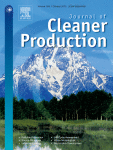 Authors: Richard TODD, Saeid BAROUTIAN
Authors: Richard TODD, Saeid BAROUTIAN
Affiliation: Department of Chemical and Materials Engineering, Faculty of Engineering, The University of Auckland, Auckland, New Zealand
Reference: Todd, R., & Baroutian, S. (2017). A techno-economic comparison of subcritical water, supercritical CO2and organic solvent extraction of bioactives from grape marc. Journal of Cleaner Production, 158, 349–358.
Abstract: “Subcritical water extraction (SWE) is a modern extraction technique that posits a number of advantages to traditional solvent extraction. This is especially so in the extraction of medically and commercially important phenolic compounds from food and food by-products. SWE uses water at elevated pressures and temperatures to extract compounds of different polarities, adjusting the water polarity by changing the system temperature. A techno-economic analysis of the extraction of bioactive phenolic compounds from New Zealand grape marc showed that the cost of manufacture (COM) by SWE (NZ$89.60/kg product) approached that of current solvent extraction techniques (NZ$87.0/kg) although was less profitable overall…”
DOI: 10.1016/j.jclepro.2017.05.043
Comments: The authors use Aspen Hysys 8.8 from Aspentech in order to develop a model of the studied extraction processes. Models in Aspen Hysys are relying on the PSRV thermodynamic model which was found best suited to represent the mixtures at hand. Then, since the authors are looking at the Potential Environmental Impacts (PEIs) of the compared processes, they switch to COFE from AmsterCHEM in order to make use of the WAR algorithm developed by Bill BARRETT et al that the authors trust as reliable for estimating PEIs. Representing the extraction processes in COFE is not a problem as long as the same thermodynamic model is used as in Aspen Hysys. Using CAPE-OPEN technology, the authors exported the PRSV model from Aspen Hysys into COFE. To be noted the WAR algorithm in COFE relies on a specialized CAPE-OPEN interface, the Flowsheet Monitoring interface, which as it stands is an earlier version of the one under development by the Methods & Tools Special Interest Group of CO-LaN.
This work shows that CAPE-OPEN enables to use the modelling techniques best suited to a given situation. On top of showing that Process Modelling Environments enabling CAPE-OPEN are basically capable of supporting the same process models, being able to mix Aspen Hysys thermodynamic model with the WAR algorithm in COFE proved to be the solution.
This paper and its use of CAPE-OPEN is cited in a comprehensive review by LEE and SOH on Process Economics and Feasibility of Subcritical & Supercritical Fluid Processing (https://doi.org/10.1016/B978-0-08-100596-5.22931-4).
